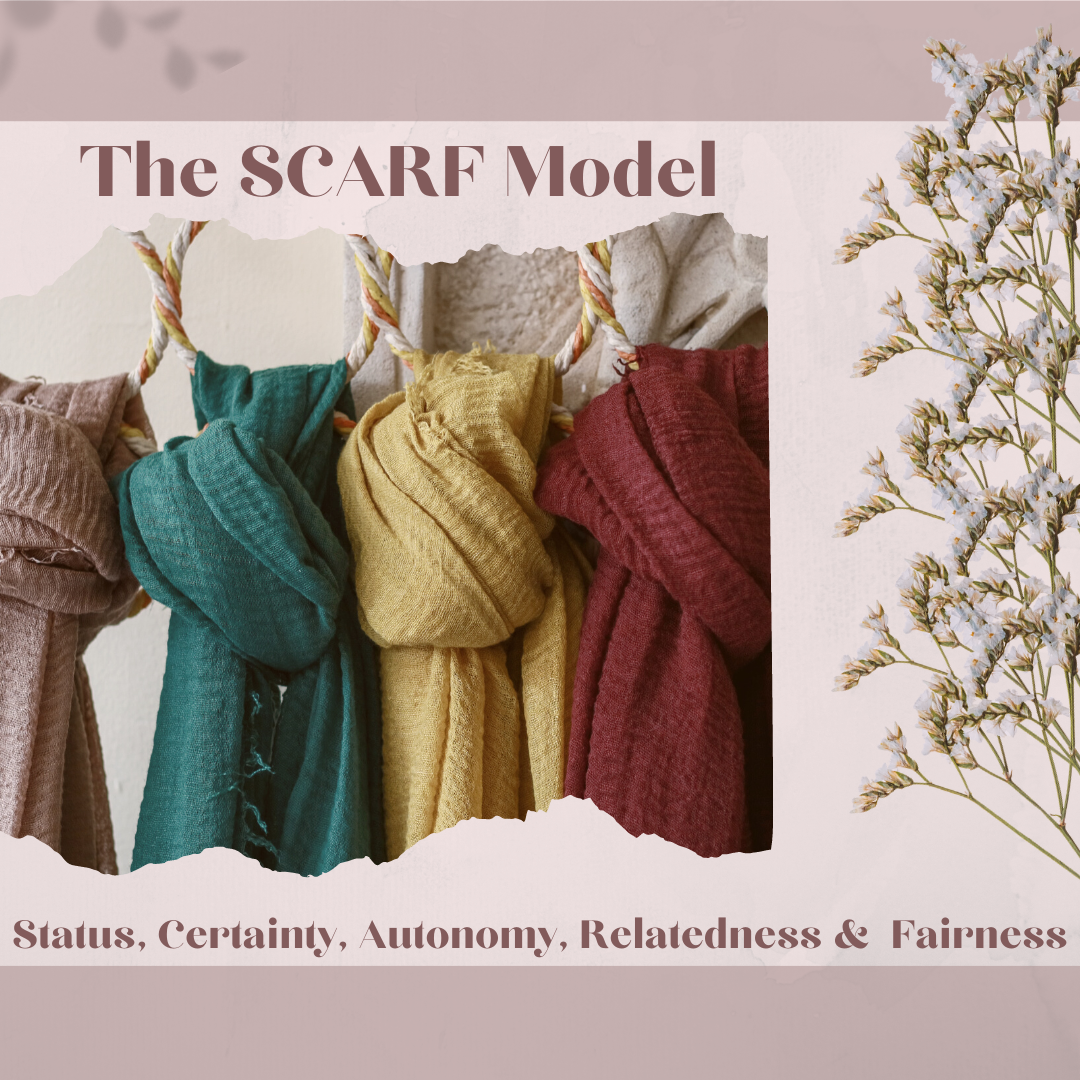SCARF Model

The SCARF Model in Conflict
The second framework we will examine is called The SCARF model. This model comes from David Rock , the Neuroscience Leadership Institute (2008). The SCARF model provides a framework to understand the five domains of human social experiences. David Rock and his team found that there are 5 areas in our brains that light up (via brain scan technology) during our social experiences.
Status – Sense of respect and importance in relation to others. “I am respected by my family, friends, and colleagues.”
Certainty – Sense of clarity to predict future outcomes. “I am confident I know what is coming next in my life.”
Autonomy – Sense of control over events that impact the future. “I am the master of my own destiny.”
Relatedness – Sense of connection with others in your groups. “I am connected to those around me.”
Fairness – Sense of non-biased and just treatment between people. “I am treated justly.”
These five areas can either be interpreted by us as a reward or threat based upon the type of social experience we experience. Conflict is, by its very nature, a social experience. When we experience conflict we are experiencing the threat response side of the SCARF model.
This framework give us the ability to look past surface level issues and start determining and analyzing the actual crux of the conflict in our lives. Understanding the root cause will help us truly resolve the issues we may face with our friends, family, co-workers, and within our communities.
_____________
By the Mind Tools Content Team. David Rock’s SCARF Model: Using Neuroscience to Work Effectively With Others. Mind Tools. Retrieved from https://www.mindtools.com/akswgc0/david-rocks-scarf-model

